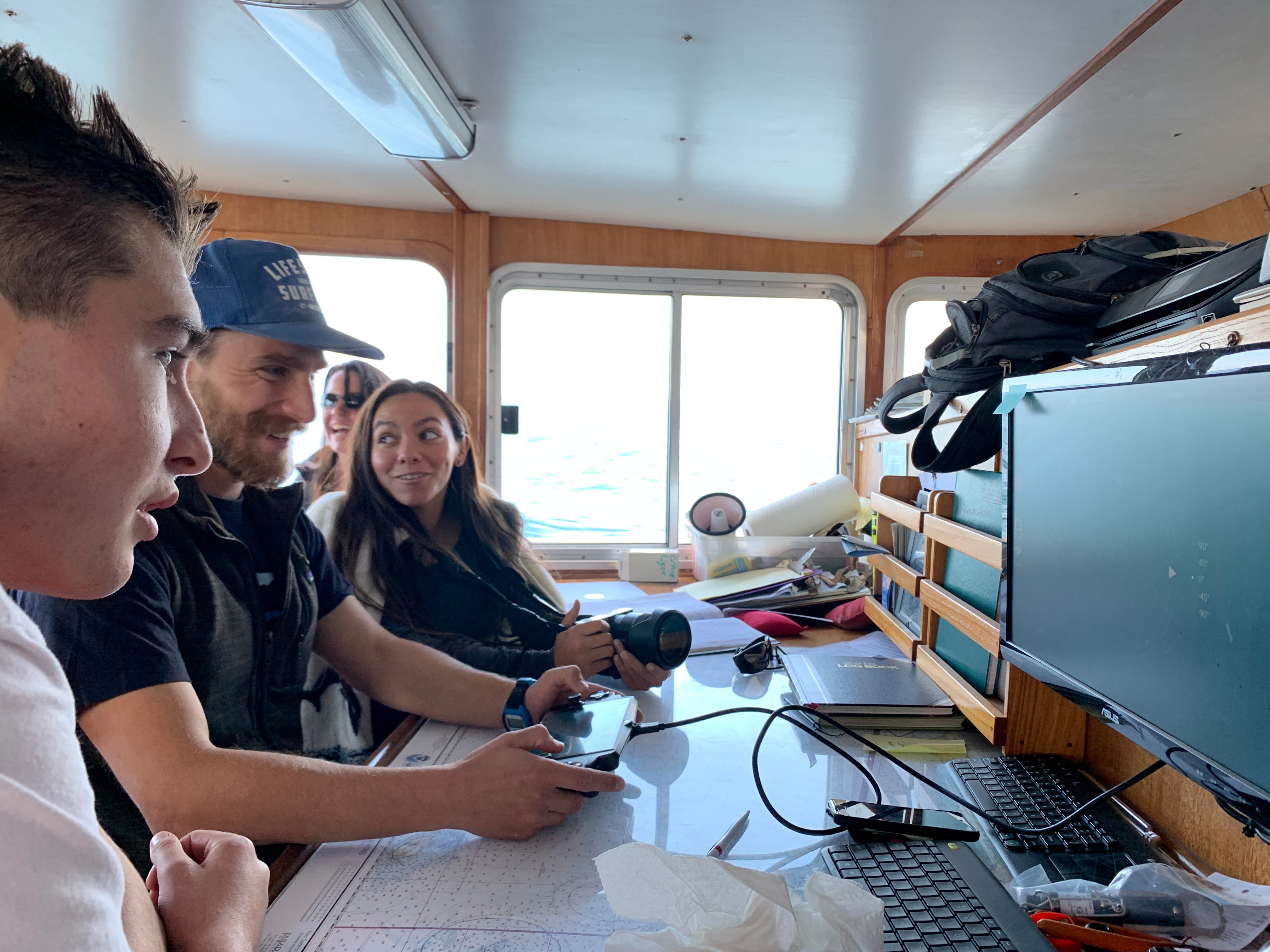Let me start out by saying that I have no idea how robots work. My background is in kelp forest ecology, I cut my teeth diving in the North Pacific from Baja California to the Bering Sea (Alaska). So, when I convinced my master’s advisor to let me instruct a group of high school volunteers in the construction of a remotely operated vehicle (ROV; think underwater tethered drone), I was surprised when he said yes. By following the instructions laid out by the ROV’s manufacturer I was able to stay one step ahead of my team. It helped that the ROVs I was working with are small, portable, and much simpler than their expedition-grade cousins (Hercules, Deep Discover).
Flash forward nearly two years and I found myself sitting at a Conservation Working Group (CWG) meeting in advance of a Sanctuary Advisory Council meeting during my very first week as a California Sea Grant fellow with NOAA Channel Islands National Marine Sanctuary (CINMS). Although this group of policy informers, agency representatives, and resource protection specialists made me feel more than welcome, I did my best “fly on the wall” impression, hoping to soak in as much information as possible. However, when the subject of ROVs came up, I simply couldn’t resist. “Are you talking about Sofar (formally OpenROV)? I used to work with them when I was a graduate student!”

California Sea Grant state fellow Pike Spector demonstrates the nuances of piloting a Trident from the wheelhouse of r/v Shearwater. Students were able to see the pilot’s view of the ROV on a computer monitor mounted in the wheelhouse. Photo credit: Boxuan Zhan
Suddenly, all eyes were on me. I was swiftly, promptly, and unequivocally now the de facto ROV liaison between the CWG, the Marine Protected Area Collaborative Network (Santa Barbara Chapter), and CINMS. Great. Already I felt in over my head. But after all, isn’t that why I set out to work with CINMS in the first place?
As a Sea Grant fellow at CINMS, my duties are split between the management team and the outreach and education team. From the start of my fellowship I was given a lot of latitude for project support and development. CINMS has longstanding partnerships with local organizations and school groups, which allowed me to integrate into that network. Helping bring the underwater world to the general public through the “eye” of an ROV fit in perfectly to CINMS’s commitment to “promote understanding, support and participation in the protection and conservation of marine resources.”
Exploring the ocean without getting wet
After a whirlwind first month at CINMS I brought along the ROV when I joined a group of Santa Barbara City College students on a trip to Santa Cruz Island as part of their Field Methods class.
With support from Sofar, not only did we get to showcase the ROV and its capabilities, we let the students “fly” two of them through eelgrass meadows and kelp forests. Most of the students had never seen the underwater world through anymore more than curated video recordings. Through the Trident pilot’s view the students were able to see the verdant expense of a seagrass meadow, and the dizzying complexity of a kelp forest in real time, without having to get their feet wet. Their wideyed looks of wonder and amazement serve as a continued source of inspiration.
While remote viewing tools like ROVs cannot replace traditional SCUBA surveys for scientific purpose, allowing students to explore the nearshore habitats of the Channel Island from the comfort of the research vessel is a priceless exercise.
California Sea Grant state fellow Pike Spector demonstrates the nuances of piloting a Trident from the wheelhouse of r/v Shearwater. Students were able to see the pilot’s view of the ROV on a computer monitor mounted in the wheelhouse. Photo credit: Dr. Peavey-Reeves
Since that first cruise in April 2019, I’ve gotten to put the underwater world in the hands of many other stakeholders up and down the coast. From local high school and middle school science teachers to MPA Collaborative members in Mendocino County, we’re slowly but surely expanding CINMS’s outreach and education toolkit to incorporate these nimble ROVs. On a more recent cruise in fall 2019 we were able to put a Trident to the test during a logistically complicated mooring recovery on Santa Rosa Island.
This fall our collaborators with the MPA Collaborative in Mendocino broadcasted the first ever live dive as part of the “Help the Kelp” initiative started by the Noyo Center. During my fellowship with CINMS I hope to bring the underwater world to the eyes of the general public through our own live dives in and around Channel Islands National Marine Sanctuary.
Written by Pike Spector
Twitter: @BaronvonUrchin
